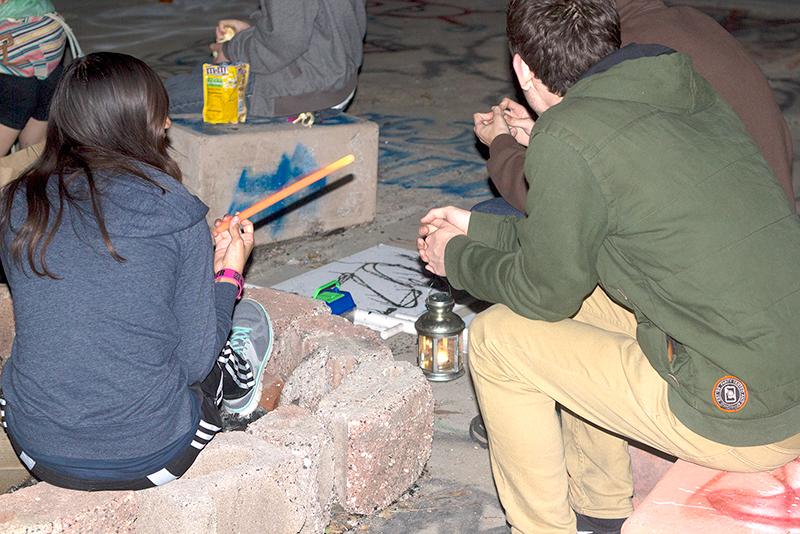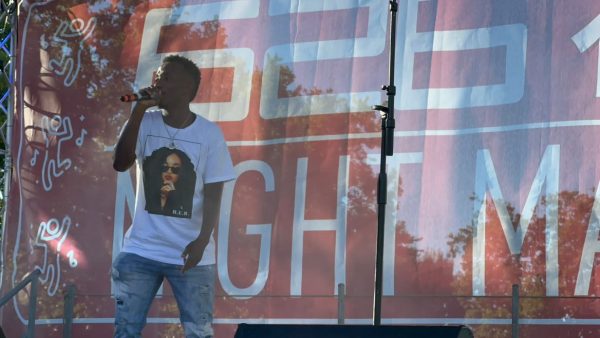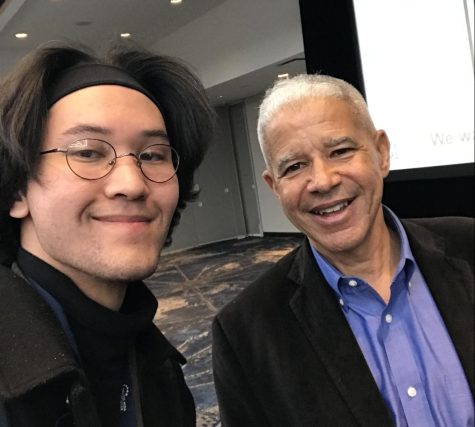Off-campus bonfire spot symbolizes underground art culture
Students gather at “The Ashtray” for a social night.
June 13, 2014
Just a half-mile down the Ziele Creek trails, behind the Pioneer housing parking lot at California State University, East Bay, between the trees lays a concrete slab covered in graffiti art that has been a frequent spot for students hiking, creating art, and gathering for campfires.
To students it is “The Ashtray,” because of the old disposed of concrete ashtrays that fill the back of the space.
During the day it is a resting spot for hikers with couches, chairs and spray paint artwork to be observed, but as the sun goes down it has become a meeting spot for students that may not be able to go to off campus house parties to gather and have campfires in the makeshift fire pit in the center of the space.
Weekends became synonymous with students bringing out their flashlights to make the eerie hike through the pitch black forest to unload their backpacks full of wood, and possibly marijuana or alcohol of choice.
Gatherings vary in size from just five or six friends sitting around the fire free-styling and making music to nearly fifty people bringing a party-like atmosphere with them.
“Being a hip-hopper, I wanted to start a movement, I wanted a place to encourage more people to free-style and emcee,” said freshman Mathew Montana-Granados about why he initially started to go, “[The Ashtray] is just a really Zen place full of different kinds of art.”
Seeing “The Ashtray” has become a sort of rite of passage for students living on campus; students often hear of the spot through word of mouth.
“An upperclassman friend of mine showed me the place and I was mesmerized, it was really beautiful… I value its isolation from the school,” said freshman Jaime Encinas who frequents the spot both during the day and at night.
While some see it as a place of carefree fun it comes with student and environmental safety. Students take precautions, recognizing that underage drinking and fire can be a dangerous combination.
“We try to keep people from throwing loose, dry leaves in the fire to keep the embers contained…we also bring a big container of water in case of emergencies,” said Montana-Granados about safety measures taken. “We remind people that containing the fire, keeping the fire going, and monitoring the fire is an all-around effort.”
Despite the seclusion of “The Ashtray,” the space has recently attracted attention from both campus police and local residents. Three weeks ago a gathering was broken up by the University Police Department with the aid of a searchlight from the ranch atop the hill, overlooking the trails. No arrests or citations were made.
“There was no written report made, all we have is a phone call informing us kids were going down there, however the informant was not present,” said Police Chief Sheryl Boykins.
Police involvement has been new to the location; Chief Boykins said she was previously unaware of the location’s existence. While the fire pit technically is not on campus, it does remain on state property as a part of the Garin/Dry Creek Pioneer Regional Parks.
“Because it is a wooded area, I would naturally be against fires there, but I have not seen the area yet…with proper fire safety procedures taken I could change my mind,” said Boykins about the possible issues of these campfires.
“The Ashtray,” along with all of its controversy, is a staple of CSUEB’s art culture. The fire pit’s out of the way location and mysterious background makes it more exclusive and all the more alluring. Getting there is an adventure into darkness, but upon arrival it is an oasis display of underground art.
















